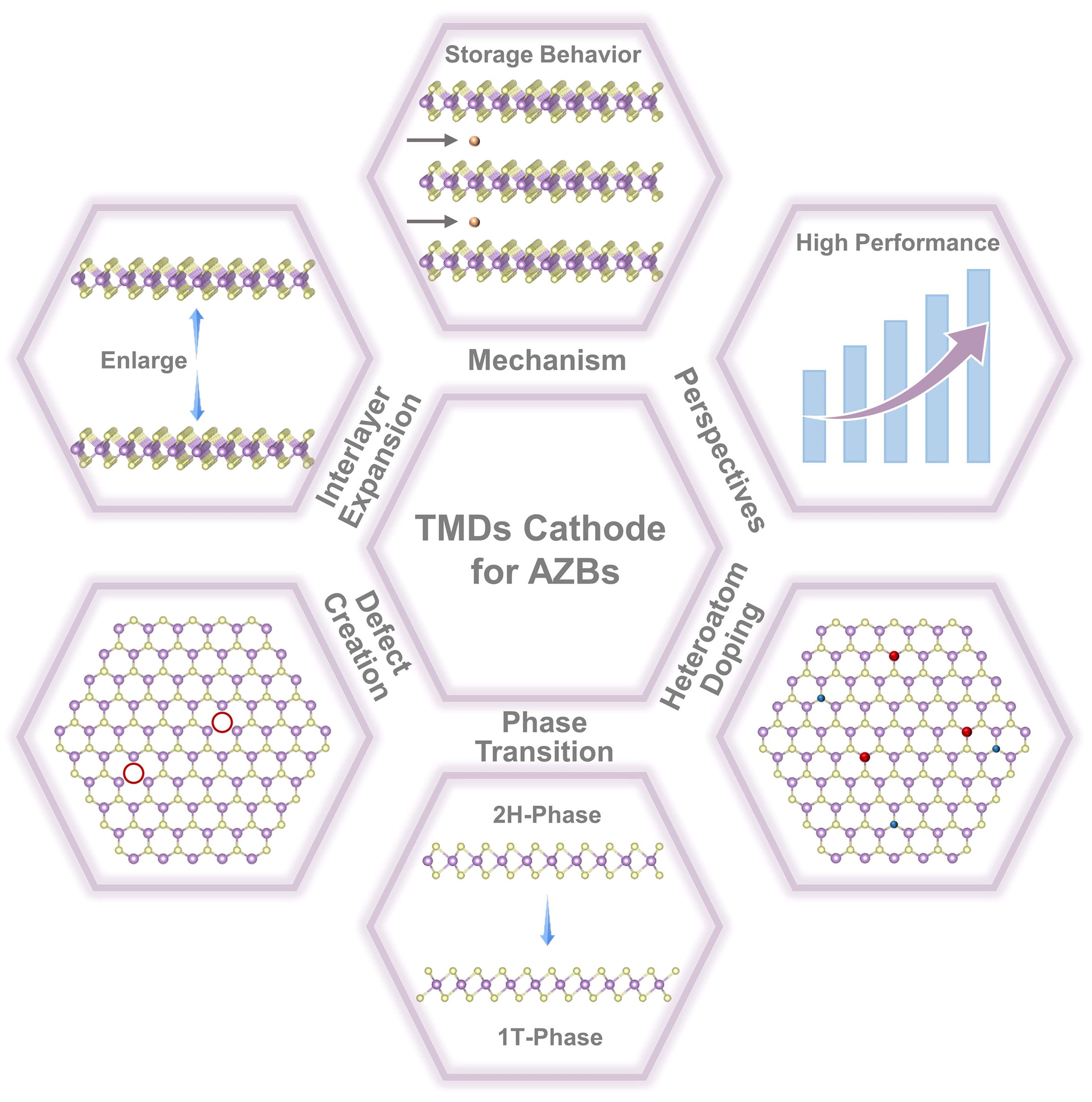S.W. Li, P. Das, X. Wang, C.Y. Li, Z.-S. Wu * and H.-M. Cheng *
Small, 2025, 2410036.
DOI: 10.1002/smll.202410036 [PDF]

Aqueous zinc-based batteries (AZBs) are gaining widespread attention owing to their intrinsic safety, relatively low electrode potential, and high theoretical capacity. Transition metal dichalcogenides (TMDs) have convenient 2D ion diffusion channels, so they have been identified as promising host materials for AZBs, but face several key challenges such as the narrow interlayer spacing and the lack of in-deep understanding energy storage mechanisms. This review presents a comprehensive summary and discussion of the intrinsic structure, charge storage mechanisms, and key fabrication strategies of TMD-based cathodes for AZBs. Firstly, the structural features including phase types and electrical properties of TMDs are underscored. Then, the charge storage mechanisms and activation principles in TMDs are elaborated along with the discussions about their influence on electrochemical performance. Afterwards, specific attention is focused on the fabrication strategies of high performance TMD cathodes, including interlayer expansion, defect creation, phase transition, and heteroatom doping. Finally, the key challenges are considered and potential effective strategies are proposed to design high performance aqueous Zn-TMDs batteries.